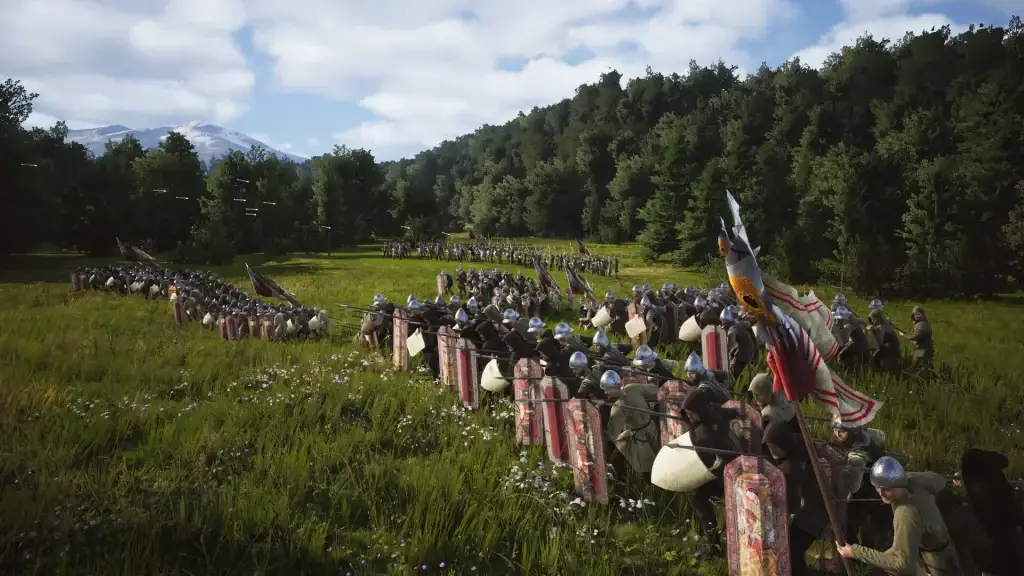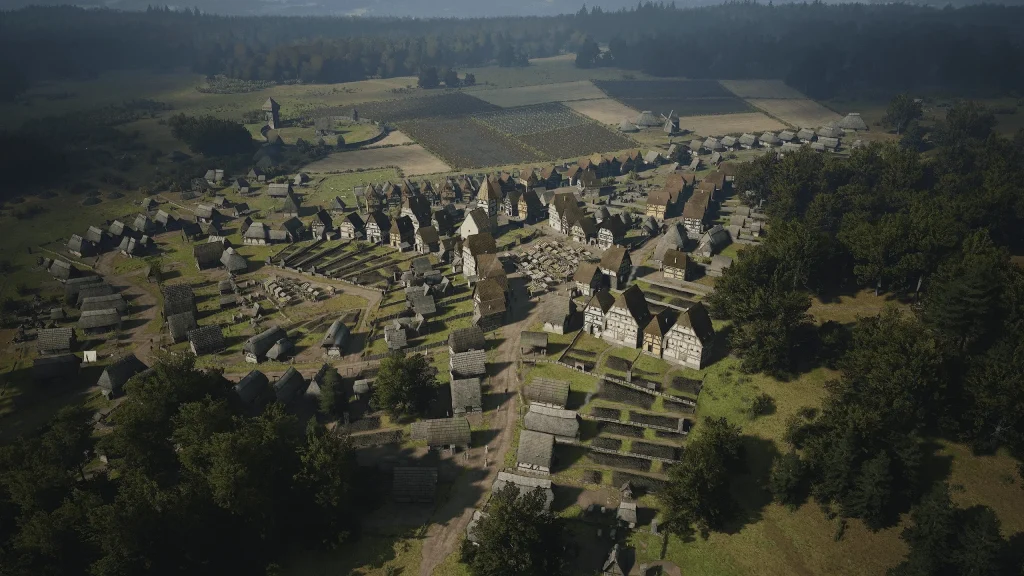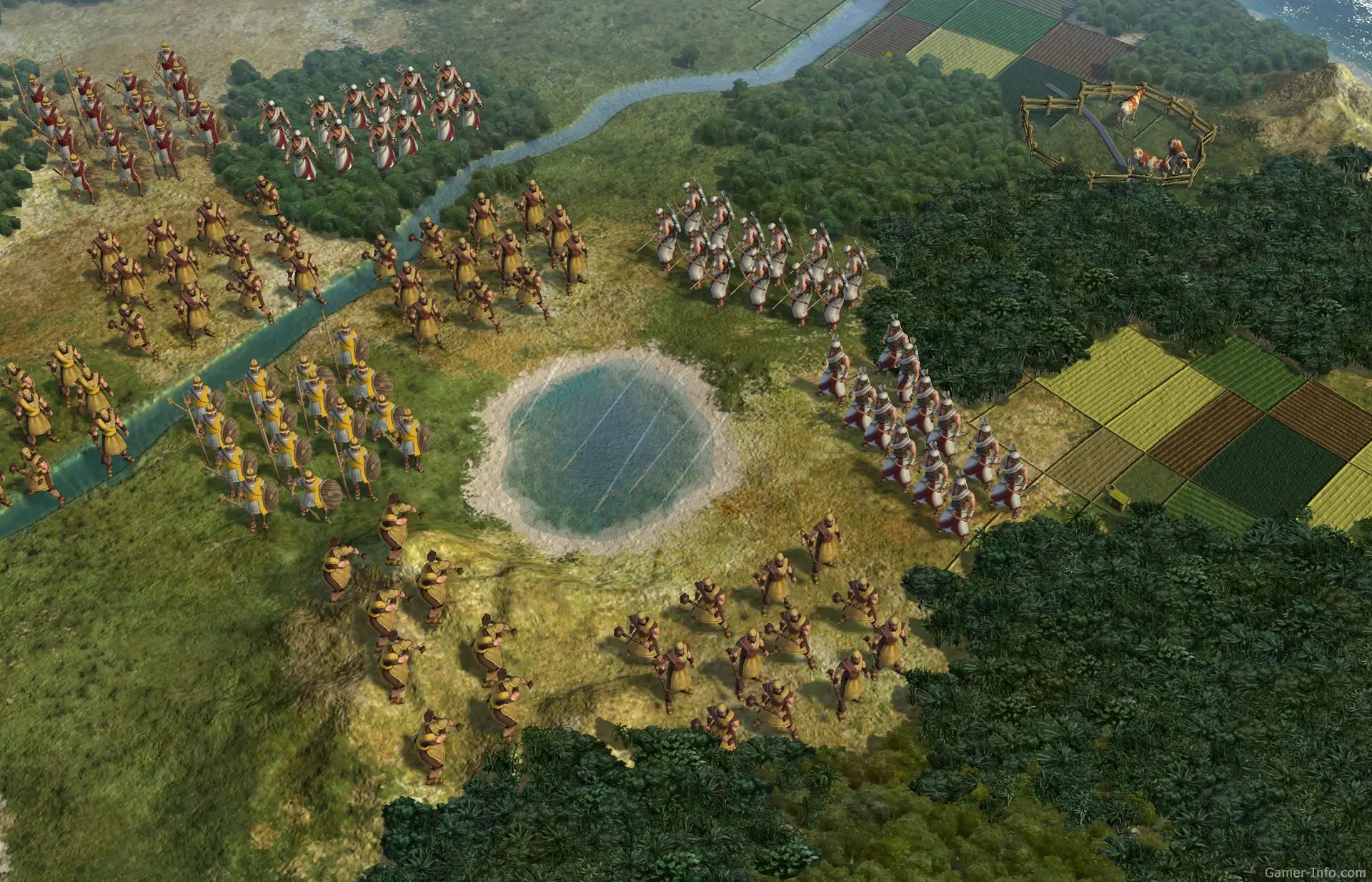Medieval strategies are a breath of fresh air for anyone tired of the excessive futurism and cruelty of modern games. Manor Lords captivates not only with the depth of the gameplay, but also with an authentic atmosphere that literally transports you to an era where every villager is an individual, and any decision is an important step in the development of society. The project has become a real hit on Steam due to its realism and an amazingly detailed world that comes to life before your eyes. Here, everyone has a chance to become the lord of a medieval settlement and build their own path.
Features of the Manor Lords gameplay
A real test of strategic thinking and attention to detail. Here, players do not just build buildings, but literally think through every detail of the development of their settlement. The key aspect is improving the economy and the correct distribution of resources that ensure growth and prosperity. Construction in Manor Lords requires not only the construction of buildings, but also careful planning of their placement, taking into account logistics. Every house, mill or forge must be connected by roads, otherwise the villagers will spend too much time moving – this directly affects their productivity.
The combat system here is unique: you can’t just recruit an army and send it to conquer. You need to think about strategy: how to position troops, how to use the landscape to your advantage, how to take into account weather conditions that can radically change the course of the battle. Players plan attacks and defenses with the same care with which they build their settlements.
Caring for the villagers plays an important role. In Manor Lords, you can’t let them go hungry or experience a shortage of basic resources. This immediately leads to a decrease in productivity, and therefore to stagnation of development. An important element is the balance between the needs of the residents and their responsibilities.
Graphics and atmosphere: how Manor Lords takes you to the Middle Ages
The project amazes with its realism. The developers used scanning technologies for real objects to recreate the smallest details of the landscape, architecture and even the texture of clothing. The Middle Ages in the game come to life thanks to detailed models of buildings and the surrounding nature, which changes depending on the season and weather conditions. Fields sown with wheat change from bright green in the spring to golden in the summer and brown in the fall.
Manor Lords pays special attention to details: cows graze in the meadows, peasants do field work, children run around the village. All these details make the virtual world alive and the atmosphere exciting. This is a journey into the past, where you can not only watch the development of the village, but also literally feel its breath.
Economic strategy and settlement development in Manor Lords
 The Manor Lords review shows that the economic component of the concept is the heart of the entire strategy. Successful settlement development requires precise planning, competent use of resources and understanding of all aspects of the economy. A village cannot grow without a well-thought-out system for distributing labor and products. For example, to build a mill, you must first mine enough wood and stone, then attract builders and provide them with food.
The Manor Lords review shows that the economic component of the concept is the heart of the entire strategy. Successful settlement development requires precise planning, competent use of resources and understanding of all aspects of the economy. A village cannot grow without a well-thought-out system for distributing labor and products. For example, to build a mill, you must first mine enough wood and stone, then attract builders and provide them with food.
The player manages not only resources, but also people. Each resident plays their role: someone works in the field, someone is engaged in construction, and someone guards the borders of the settlement. Successful distribution of responsibilities is the key to success. You will have to take into account everything: from weather conditions affecting the harvest, to social factors – how the happiness of residents affects productivity. It is important to maintain a balance between the development of infrastructure and providing people with the necessary goods so that they can not only work, but also enjoy life.
Tips for managing the economy in Manor Lords:
- Plan construction in advance. Consider logistics so that all buildings are connected by convenient roads.
- Don’t forget about food. Provide sufficient food supplies for all residents.
- Distribute roles. Make sure that no one is idle, and all the needs of the village are covered.
- Use resources efficiently. Do not waste materials, build only what is really necessary for development.
Military strategies and tactics in Manor Lords
The realistic battle system means that every mistake can cost an entire army. It is important to consider the terrain, which can be used as cover or natural defense, as well as the morale of the troops. The better prepared the army is and the higher its motivation, the greater the chances of victory.
Careful planning also includes taking into account the weather. Rain and mud can slow down the movement of troops, making some tactical maneuvers impossible. Users must decide whether to attack now, taking risks, or wait for better conditions. Battles in Manor Lords are a real test of strategic thinking, where victory goes not to the strongest, but to the smartest.
Manor Lords Guides and Walkthroughs
Players who want to fully master all the nuances of the gameplay will find many useful guides. These materials allow you to better understand the economic mechanics and tactics necessary for successful completion. One of the best ways to succeed in Manor Lords is to study other people’s strategies, adapt them to your needs, and don’t be afraid to experiment.
A few tips:
- Study basic economic strategies. Understand how to effectively allocate resources to avoid shortages.
- Use defensive and offensive tactics. Follow proven approaches from experienced players to optimize your strategy.
- Adapt tips to the game. Consider the unique features of your settlement and preferences.
- Experiment with layout. Try different building layouts to find the optimal balance between productivity and convenience.
- Monitor the motivation of your residents. Happy citizens work better, which directly affects the development of the village.
- Develop your army gradually. Do not strive for a large number at once, it is better to ensure high motivation and the right weapons.
Conclusion
 Manor Lords offers a unique combination of construction, economics, and tactics. The game makes you think, plan, and take into account all the little things – from the needs of the residents to the landscape that affects the outcome of battles. This project is definitely worth the attention of everyone who loves depth and realism in games.
Manor Lords offers a unique combination of construction, economics, and tactics. The game makes you think, plan, and take into account all the little things – from the needs of the residents to the landscape that affects the outcome of battles. This project is definitely worth the attention of everyone who loves depth and realism in games.
Where to download and buy Manor Lords? For those who are ready to test their strength, the project is already available for purchase and download on Steam. The game is quickly gaining popularity, and many players have already appreciated its unique approach to medieval strategies.
 en
en  de
de  ar
ar  es
es  nl
nl  hi
hi  fr
fr  it
it  pt
pt  el
el 



